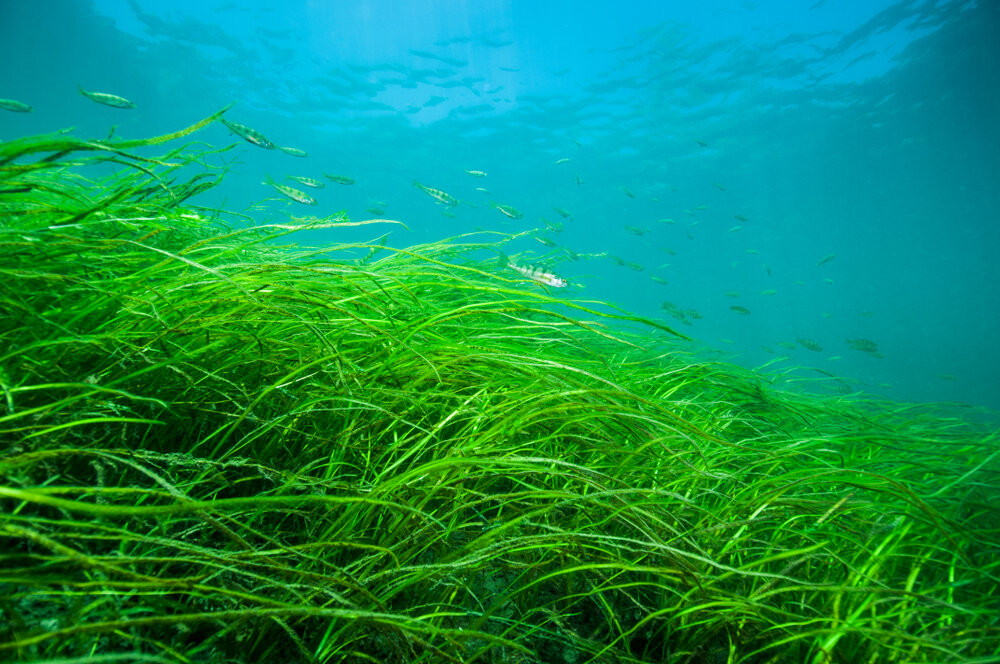Vol. 29, No. 5 ● May 6, 2021
SAVe Yourself A Headache
WSSI staff conducting survey near shore in shallow water
The recommended survey windows are approaching for submerged aquatic vegetation (SAV). If you are working on a project that impacts tidal waters – such as boat piers, docks, marinas, or channel dredging – you are likely required to document the presence or absence of SAV on your project site to determine whether compensatory mitigation is required. The National Oceanic and Atmospheric Administration (NOAA) Chesapeake Bay Office recommends two windows for conducting field surveys: May 15 through June 15, and July 15 through September 15. These two windows allow surveyors to locate different species that may only be present during these timeframes.
Why are SAV Surveys Necessary?
The Virginia Marine Resources Commission (VMRC) regulates nearly all the subaqueous areas or ‘lands under the water’ of Virginia, including all tidal waters. VMRC also regulates streams with drainage areas in excess of 5 square miles, and SAV is often found in large non-tidal streams. With this regulation, all project activities over, under, or on these areas require a permit from VMRC and may require compensatory mitigation for any impacts to SAV. Section I.C.3 of the VMRC Subaqueous Guidelines states that "should a permitted project result in a loss or impact to submerged aquatic vegetation (SAV), compensatory mitigation may be required. This may include transplantation of SAV from the area of impact or planting of a new area."
Maryland also regulates SAV as part of tidal wetlands under the Code of Maryland Regulations (COMAR) 26.24. If your project is near the tidal Potomac or other tidal tributaries of the Chesapeake Bay, you need to know if your project has the potential to impact SAV so you can comply with Maryland regulations.
What is Submerged Aquatic Vegetation?
Submerged aquatic vegetation are the communities of plants that live beneath the water surface, often forming dense beds. This vegetation provides food and shelter for wildlife including fish and waterfowl, removes nutrients and sediments from the water column, and helps stabilize sediments while reducing wave energy and erosion. Two examples of SAV are water stargrass (Heteranthera dubia) and American eel grass (Vallisneria americana), shown below.
water stargrass (Heteranthera dubia)
American eel grass (Vallisneria americana)
We're SAV Savvy!
WSSI staff surveying SAV in deeper water
Wetland Studies and Solutions, Inc. has significant experience conducting SAV surveys in both Virginia and Maryland. We can help you determine if your project site could impact SAV or requires an SAV survey. In Virginia, contact Ben Rosner in our Gainesville office or Bob Kerr in our Virginia Beach office; in Maryland, contact Mike Klebasko in our Millersville office.
American eel grass provides shelter for these yellow perch.





